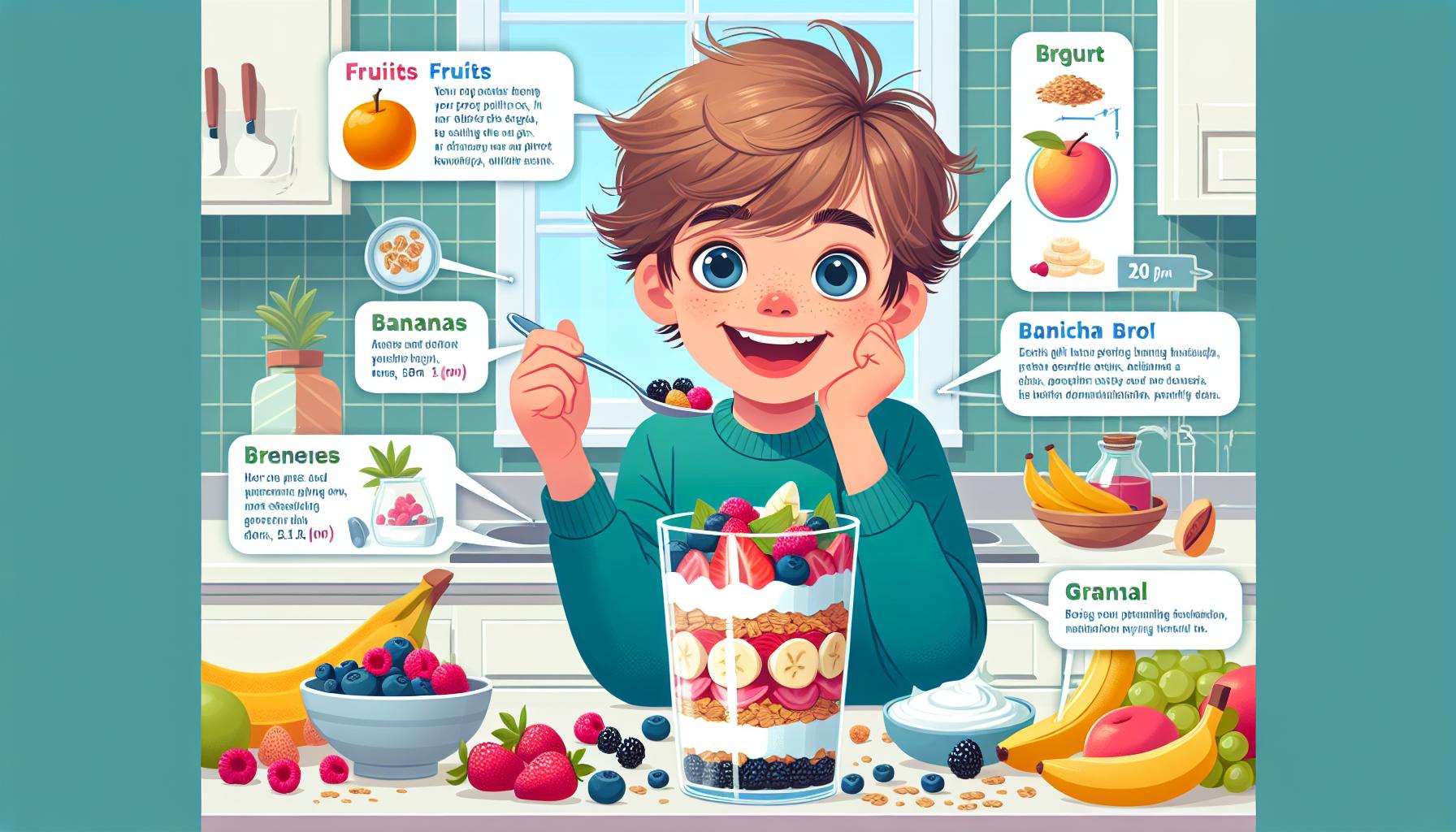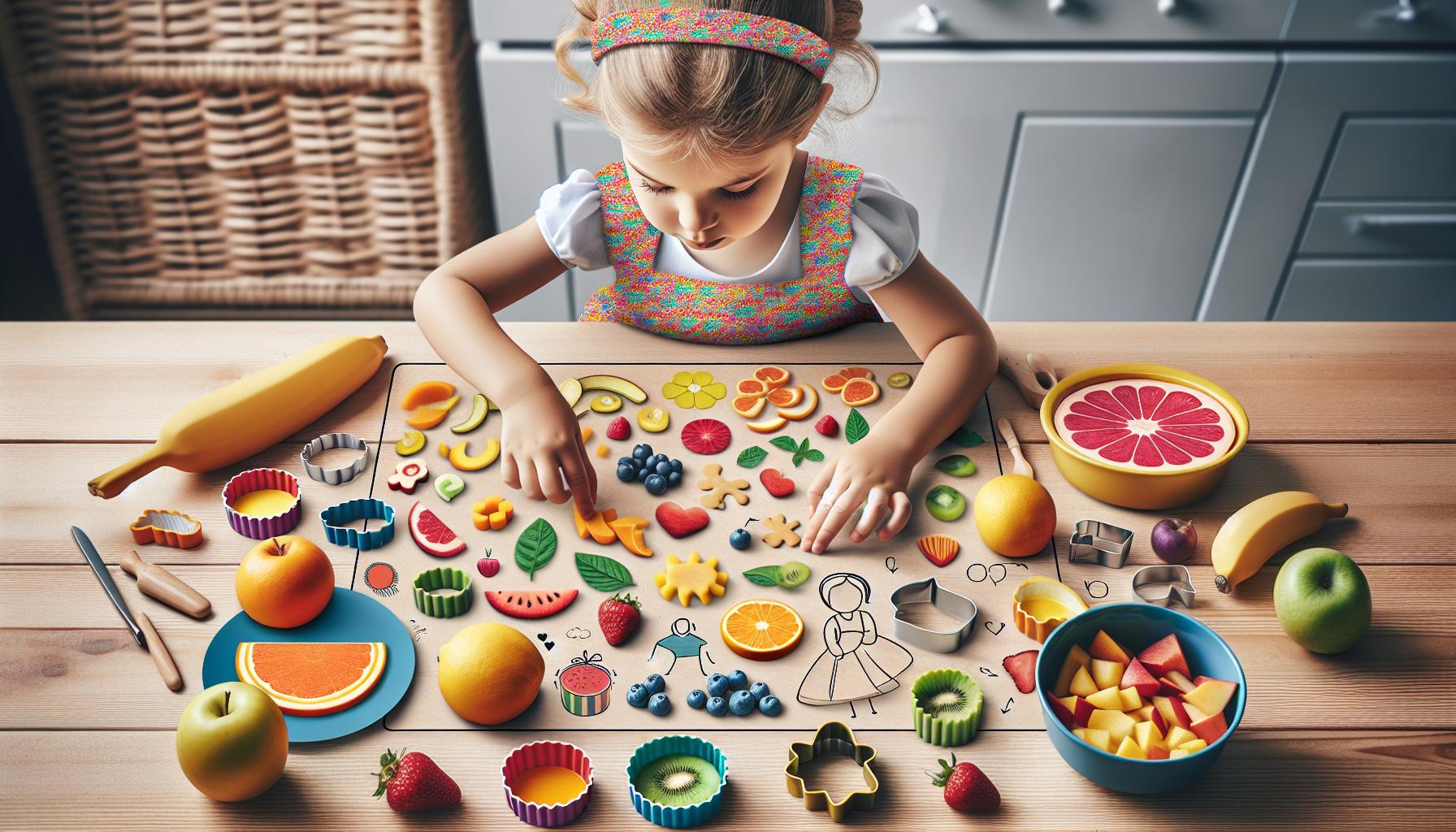
Looking for ways to make desserts healthier for your kids without sacrificing the fun? We’ve got a collection of fruit-based treats that’ll bring smiles to little faces while sneaking in essential nutrients. These desserts transform everyday fruits into exciting sweet creations that kids won’t be able to resist.
Whether you’re planning a birthday party or just want to offer a better alternative to store-bought sweets we’ll show you how simple ingredients can create magical results. From frozen banana pops to strawberry yogurt parfaits these recipes are easy enough for kids to help make and nutritious enough for parents to feel good about serving. What could be better than creating memories in the kitchen while teaching children about healthy food choices?
Key Takeaways
- Fruit-based desserts provide a healthier alternative to traditional sweets, offering natural sugars and essential nutrients while keeping kids engaged in the kitchen
- Children who help prepare fruit desserts develop better eating habits and food recognition skills while learning basic cooking techniques in a safe environment
- Creative presentation techniques, like using cookie cutters and colorful arrangements, make healthy fruit treats more appealing and exciting for kids
- Age-appropriate tasks, from washing fruits (ages 2-3) to supervised cutting (ages 8+), allow children to participate safely in dessert preparation
- Proper portion control and natural sweetener alternatives, such as mashed bananas and pureed dates, help maintain the health benefits of fruit-based desserts
Why Fruit Desserts Are Perfect for Children
Fruit desserts offer children natural sweetness with essential vitamins minerals. These treats combine the appeal of desserts with nutritional benefits, making them an ideal choice for health-conscious parents.
Three key benefits make fruit-based desserts stand out:
- Natural Sugar Content
- Fruits contain fructose instead of refined sugars
- Lower glycemic index reduces sugar spikes
- Creates balanced energy levels for active kids
- Nutrient-Rich Components
- Vitamin C from citrus fruits like oranges strawberries
- Potassium from bananas mangoes
- Fiber for healthy digestion development
- Interactive Food Experience
- Easy preparation encourages kitchen participation
- Colorful ingredients create visual excitement
- Safe handling teaches basic cooking skills
Fruit desserts support healthy eating habits through:
- Simple ingredient recognition
- Natural flavor appreciation
- Positive associations with healthy foods
| Nutrient Comparison | Fruit Desserts | Traditional Desserts |
|---|---|---|
| Sugar (g/serving) | 12-15 | 25-30 |
| Fiber (g/serving) | 3-5 | 0-1 |
| Vitamins (% DV) | 15-25% | 0-5% |
Children develop food preferences early in life. Introducing fruit-based treats creates lasting connections to nutritious options while satisfying sweet cravings naturally.
- Seasonal ingredient variations
- Texture customization
- Temperature adaptations (frozen hot)
- Creative presentation options
Kid-Friendly Fruit Dessert Ideas

Transform everyday fruits into exciting desserts that kids love to eat and help prepare. These creative recipes combine nutritious fruits with simple ingredients to create memorable treats.
Fresh Fruit Parfaits and Yogurt Cups
Kids get excited about layering colorful fruits with creamy yogurt to create their own parfait masterpieces. Mix Greek yogurt with a touch of honey, then alternate layers with fresh berries, diced peaches or sliced bananas. Top with granola, chia seeds or coconut flakes for added crunch. Create themed parfaits using red and blue berries for holidays or rainbow layers for birthday celebrations.
Frozen Fruit Pops and Smoothie Bowls
Transform ripe fruits into refreshing frozen treats that cool kids down on warm days. Blend strawberries, mangoes or watermelon with Greek yogurt and freeze in popsicle molds. For smoothie bowls, combine frozen banana, berries and milk to create a thick base. Let kids customize their bowls with toppings like:
- Fresh fruit chunks
- Granola clusters
- Mini chocolate chips
- Shredded coconut
- Drizzled honey
- A scoop of vanilla ice cream
- Whipped cream swirls
- Caramel sauce drizzle
- Crushed graham crackers
- A sprinkle of cinnamon sugar
Making Fruit Desserts Fun and Appealing

Transforming fruits into exciting desserts captures kids’ attention through creative presentation and hands-on preparation. These engaging approaches turn healthy treats into memorable experiences.
Creative Presentation Tips
- Cut fruits into playful shapes using cookie cutters (stars, hearts, animals)
- Arrange fruit pieces to create colorful patterns or characters
- Layer different colored fruits in clear glasses for rainbow effects
- Use fun serving containers like ice cream cones or waffle bowls
- Add natural food coloring to yogurt for vibrant dips
- Create fruit kebabs with alternating colors
- Display fruits in unique patterns (spiral, flower, face shapes)
- Incorporate edible decorations like mint leaves or coconut shavings
- Let kids wash fruits in a water-filled sink
- Guide them in measuring ingredients for fruit dips
- Show proper cutting techniques with kid-safe tools
- Have children arrange fruit pieces on plates
- Let them spoon yogurt into parfait layers
- Encourage mixing fruit combinations
- Allow decoration choices with approved toppings
- Give simple tasks like peeling bananas or removing strawberry stems
- Create assembly stations where kids add ingredients
- Let them name their creations
| Age Group | Safe Preparation Activities |
|---|---|
| 2-3 years | Washing fruits, arranging pieces |
| 4-5 years | Peeling bananas, breaking apart grapes |
| 6-7 years | Spreading toppings, creating patterns |
| 8+ years | Basic cutting with supervision, measuring ingredients |
Healthy Swaps and Ingredient Guidelines
Creating nutritious fruit-based desserts involves smart ingredient choices paired with proper portion control. These guidelines help transform traditional treats into healthier options without sacrificing taste.
Natural Sweetener Options
Fresh fruits provide natural sweetness through fructose, eliminating the need for added sugars. Here are effective alternatives to refined sugar:
- Mashed bananas add creamy sweetness to baked goods (1/2 cup = 1/2 cup sugar)
- Pureed dates create caramel-like flavor in smoothies (8 dates = 1/2 cup sugar)
- Apple sauce works as a moisture-rich sweetener (3/4 cup = 1 cup sugar)
- Frozen grapes offer candy-like sweetness for immediate snacking
- Berry purees enhance natural flavors in parfaits or frozen treats
Portion Control Recommendations
Proper serving sizes keep desserts healthy while teaching kids balanced eating habits. Follow these measured guidelines:
| Age Group | Fruit Portion | Dessert Size |
|---|---|---|
| 2-3 years | 1/2 cup | 1/4 cup |
| 4-8 years | 3/4 cup | 1/3 cup |
| 9-13 years | 1 cup | 1/2 cup |
Tips for maintaining portions:
- Use small, colorful serving bowls
- Pre-portion ingredients into silicone molds
- Create mini versions of larger desserts
- Layer ingredients in clear cups for visual appeal
- Serve fruit-based treats on smaller plates
The combination of natural sweeteners and appropriate portions creates satisfying treats that support healthy eating habits. These guidelines make it simple to prepare balanced desserts kids love.
Safety Tips for Preparing Fruit Desserts
Basic Kitchen Safety
Clean hands create safe desserts. Everyone starts with a thorough 20-second hand wash using warm water and soap. Keep workspaces sanitized by wiping counters with food-safe cleaning solutions before and after preparation.
Here’s a quick safety checklist for kitchen prep:
- Store fresh fruits in the refrigerator at 40°F or below
- Wash all fruits under running water before cutting
- Use separate cutting boards for fruits and other foods
- Keep sharp tools away from edges of counters
- Supervise children during all cutting activities
Age-Appropriate Tasks
Different ages require specific safety considerations:
Ages 2-3:
- Wash fruits in a colander
- Place prepared fruits in bowls
- Stir ingredients with plastic utensils
Ages 4-5:
- Peel bananas or mandarins
- Measure ingredients
- Mix ingredients in bowls
Ages 6+:
- Cut soft fruits with plastic knives
- Operate blenders with supervision
- Layer parfaits and desserts
Food Allergen Awareness
Food allergies affect 1 in 13 children. Here’s how to handle common allergens:
- Check ingredient labels for hidden allergens like nuts
- Use clean utensils to avoid cross-contamination
- Keep a list of guests’ food allergies
- Store allergy-friendly options separately
- Label desserts with ingredient information
Temperature Control
Safe temperature management prevents foodborne illness:
| Food Item | Storage Temperature | Maximum Room Temp Time |
|---|---|---|
| Fresh fruit | 40°F or below | 2 hours |
| Dairy toppings | 40°F or below | 1 hour |
| Frozen treats | 0°F or below | 30 minutes |
Hygiene During Preparation
Maintain cleanliness throughout dessert preparation:
- Tie back long hair
- Remove jewelry before handling food
- Use clean aprons or protective clothing
- Replace tasting spoons after each use
- Cover cuts with waterproof bandages
- Unplug electrical appliances before cleaning
- Place blenders away from counter edges
- Use non-slip mats under mixing bowls
- Check for damaged cords or plugs
- Store sharp tools in designated holders
Conclusion
Creating fruit-based desserts with kids opens up a world of possibilities for healthy eating and family bonding. We’ve seen how these nutritious treats can transform dessert time into an engaging learning experience while promoting better food choices.
By getting our children involved in the kitchen and making healthy desserts fun we’re setting them up for a lifetime of positive eating habits. These fruit-based treats aren’t just delicious – they’re stepping stones to understanding nutrition making memories and developing essential kitchen skills.
Remember that the journey to healthier eating can be both fun and rewarding. Let’s embrace these fruity alternatives and watch our kids discover the natural sweetness that wholesome desserts can bring to their lives.
Frequently Asked Questions
What makes fruit-based desserts healthier than traditional sweets?
Fruit-based desserts contain natural sugars instead of refined sugars, providing steady energy levels without crashes. They’re rich in essential vitamins, minerals, and fiber, while having fewer calories than traditional desserts. The natural sweetness of fruits eliminates the need for added sugars, making them a nutritious alternative.
How can I get my kids interested in making fruit desserts?
Involve them in the preparation process by letting them choose fruits, wash them, and create their own combinations. Use fun presentation techniques like cutting fruits into shapes or arranging them in colorful patterns. Make it interactive by using parfait stations or smoothie bowl bars where kids can customize their treats.
What are some easy fruit dessert recipes for beginners?
Start with simple recipes like frozen banana pops, fresh fruit parfaits, or yogurt cups. Layer colorful fruits with yogurt, blend smoothie bowls, or make fruit popsicles. These recipes require minimal cooking skills and can be customized with different fruits and toppings.
How can I ensure proper portion control in fruit desserts?
Use small serving bowls or containers to control portion sizes. Pre-measure ingredients and create visually appealing layered desserts that look satisfying in smaller amounts. Follow age-appropriate portion guidelines and use natural sweeteners in moderation.
What safety measures should I consider when making fruit desserts with kids?
Always supervise children, ensure proper hand washing, and sanitize work surfaces. Assign age-appropriate tasks, be mindful of food allergies, and maintain proper temperature control for ingredients. Use child-safe utensils and teach basic kitchen safety rules.
How can I naturally sweeten fruit desserts without adding sugar?
Use naturally sweet fruits like ripe bananas, dates, or applesauce as sweeteners. Combine different fruits to enhance sweetness, or add a touch of honey or maple syrup if needed. Avoid artificial sweeteners and focus on the natural flavors of fresh fruits.
What are the best fruits to use in kid-friendly desserts?
Choose colorful, sweet fruits like strawberries, bananas, mangoes, and berries. These fruits are naturally appealing to children, easy to work with, and packed with nutrients. Mix different textures and colors to make desserts more interesting and enjoyable.
How long can fruit desserts be stored?
Most fruit desserts can be refrigerated for 1-2 days in airtight containers. Frozen treats like fruit pops can last up to 3 months in the freezer. Always check for signs of spoilage and follow proper food storage guidelines.

